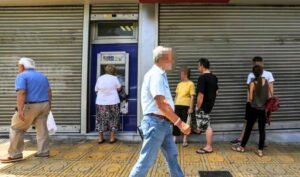The European Commission gave the “green light” to the government to begin new payments from OPEKEPE. The Commission’s approval of the government’s reform plan was given on Wednesday evening (19/11). “Yesterday evening we received approval from the European Commission for the payment of subsidies,” announced Deputy Prime Minister Kostis Hatzidakis speaking today on Open TV. Following the approval, “we proceed to computers and the algorithm, so that subsidies can be paid in about 10 days,” he stated.
OPEKEPE subsidies: “There will be a proximity criterion”
Regarding the payment of subsidies from OPEKEPE, Mr. Hatzidakis stated: “Now it’s the payment of the basic support advance, 70%, which will be paid through the hybrid system. Subsequently, with the necessary checks, the remaining 30% will be paid, there is measure 23 for farmers, which will be paid shortly after. Also, by the end of the year smaller programs will have been paid.”
As he argued, this year’s checks will be conducted through a hybrid system with ATAK and KAEK declarations for farmers, while “in livestock farming we will rely on certain data regarding milk and meat production and feed purchases. These will serve as evidence to approximately determine the number of animals each livestock farmer has.” Additionally, “the technical solution stops and there will be a proximity criterion. I can only declare grazing land in my prefecture and neighboring prefectures, so we can rationalize the system.”
Hatzidakis: Second distribution of funds to “honest farmers”
Regarding 2026, the Deputy Prime Minister explained that “we will have the implementation of new agricultural technologies using satellites for cultivated areas. In livestock farming, we will have a chip placed on sheep and goats to record the exact number of animals.” Furthermore, Kostis Hatzidakis announced that “because we are implementing the new system, there will be leftover funds and these will not return to Brussels, but will be redistributed internally through a second distribution to honest farmers.”
Pan-Thessaly farmers’ blockade
For their part, farmers and livestock breeders are warming up their tractor engines and planning dynamic mobilizations – with the prospect of establishing a joint pan-Thessaly blockade in Nikaia, Larissa, on the National Highway, possibly in early December (3-5/12). Agricultural and livestock farmers in Ilia are moving in the same direction, while an escalation of the struggle is expected throughout the region, with main demands being the release of payments from OPEKEPE and ELGA.
It should be noted that in yesterday’s farmers’ meeting held in Farsala, representatives of agricultural associations in Thessaly reached a common direction ahead of the nationwide meeting on Sunday, November 23, in Nikaia, Larissa. The statements of meeting participants converged on the need for a joint presence of all Thessaly farmers, with a clear intention to form a large, unified pan-Thessaly blockade.
Farmer mobilization in Ilia on Thursday (20/11)
The situation with animal diseases, payment delays, and low product prices has brought many producers to despair, creating intense concern about herd survival and the economic viability of their families.
In this context, two significant mobilizations have been scheduled, with the first taking place today at 11:30 at the Roupaki Junction, while the second will occur on November 22 at 19:00 in Patras, with participation from farmers throughout the region, in order to highlight their problems and demands.




